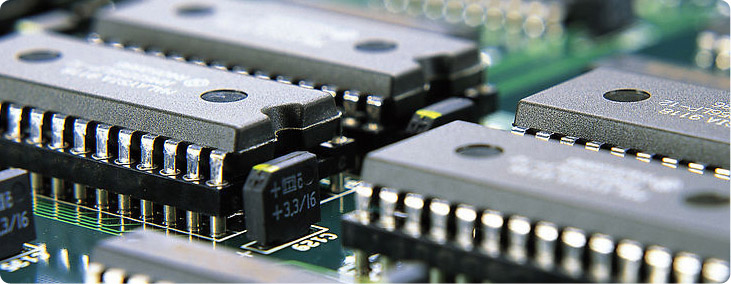Integrated circuits (also known as ICs or microchips) are essentially mini electronic components that are manufactured on top of a thin semiconductor. They are used inside nearly all of the electronic equipment used nowadays, from computers and phones to microwaves and virtually all appliances that feature a digital component. There are three basic types of integrated circuits: digital, analog, and mixed signal chips. Digital chips are the smallest in size, the fastest, and they have lower power loss and cost. Analog chips work by continually processing signals. Finally, mixed signal chips are something of a hybrid between digital and analog, combining both on a single chip. Integrated circuits are comprised of transistors and other components, the sum of which are etched on a semiconductor substrate. Integrated circuits are more reliable than discrete circuits, and they are more easily mass produced.
By contrast, a discrete circuit is made up of transistors on different substrates that are then wired together with wires and printed traces. There are two different kinds of discrete circuits: hybrids and printed circuits. Let’s look at each of these a little more closely:
Hybrid circuits are diode chips (also known as transistor chips) and integrated circuits that are placed on an insulating ceramic substrate with either printed traces or wired traces.
Printed circuits (also known as printed circuit assemblies or PCAs) are located on glass epoxy substrates using leaded (and sometimes leadless) chips both of transistor diodes ICs and passives, as well as devices such as relays and switches. All of these elements are connected by printed conductive traces. This type of circuit is by far one of the most commonly used, second only to individual integrated circuits.
Printed circuit boards can be further broken down into other subcategories as well: single-sided boards, double-sided boards, and multi-layered boards. Single-sided boards are the simplest, as they are comprised of only one layer of substrate. All of the electrical parts are fixed to one side, with copper traces being affixed to the other side. On a double-sided board, which is the most common type, components are affixed to both sides of the substrate. In those cases, the PCB has connecting traces on both sides. Finally, there are multi-layered boards. These boards consist of several layers of substrate separated by insulating material. Generally, there are either four, six, eight, or ten layers, but it is possible to create a PCB that has many more layers than this. In most cases, these boards are used in very intricate and complex circuitry.
For more information about the various types of boards and their applications, check out https://www.icrfq.com.

